The Pros & Cons of Different Aircraft Types
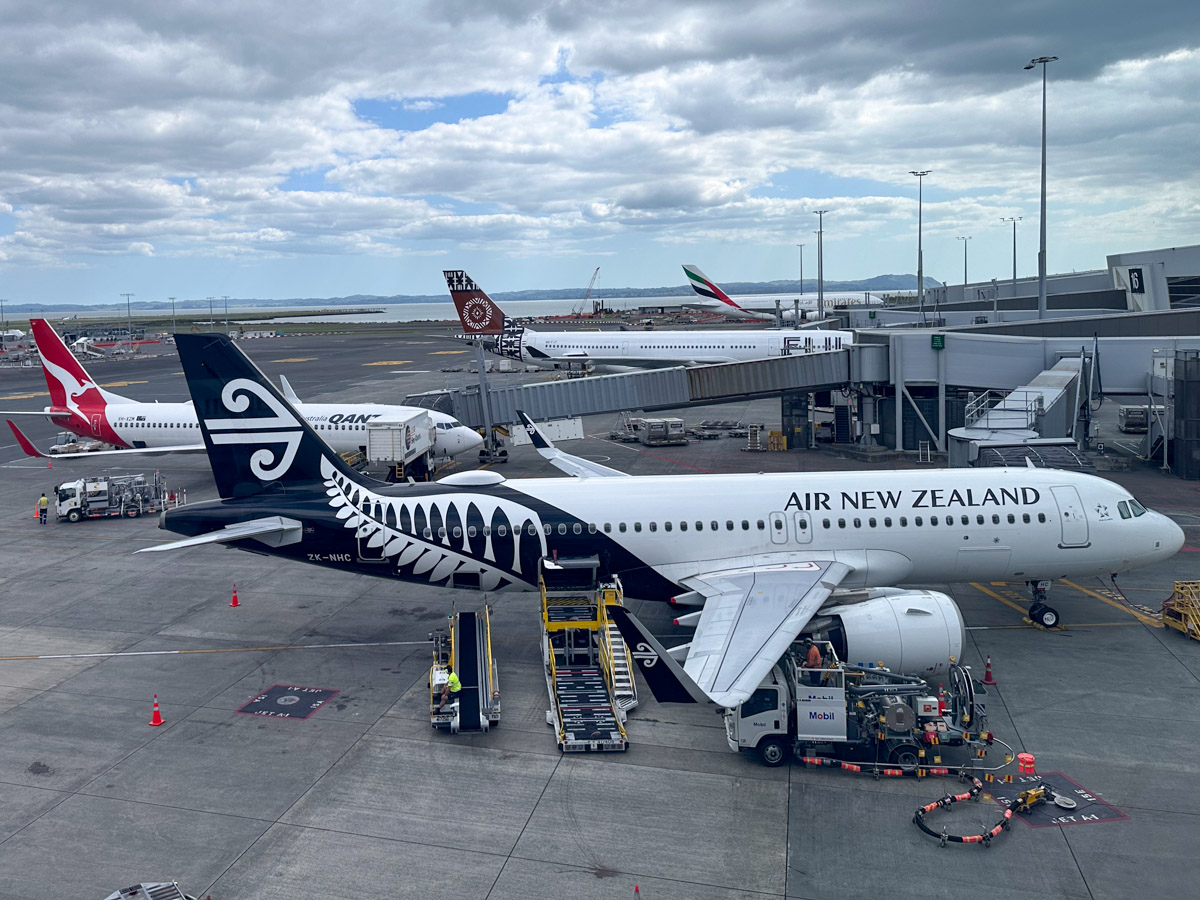
When booking a flight, you might have a choice of flights on different aircraft types.
Knowledgeable frequent flyers often go out of their way to book one specific plane type over another, because they know they’ll get a more comfortable ride. But how do you tell the difference between different plane types, and which planes are better?
Narrow-body vs wide-body planes
One of the biggest differences in plane types, from a passenger perspective, is between narrow-body and wide-body planes.
Narrow-body planes like the Boeing 737 or Airbus A320 are smaller and have only one aisle in the cabin. Airlines typically use narrow-bodies for shorter flights.

Many frequent flyers prefer wide-body planes like the Airbus A330 or Boeing 777, as these have two aisles. They are larger, and airlines often configure them with longer flights in mind. There’s usually more space on board, including areas where you can stretch your legs without being in the way of other people.
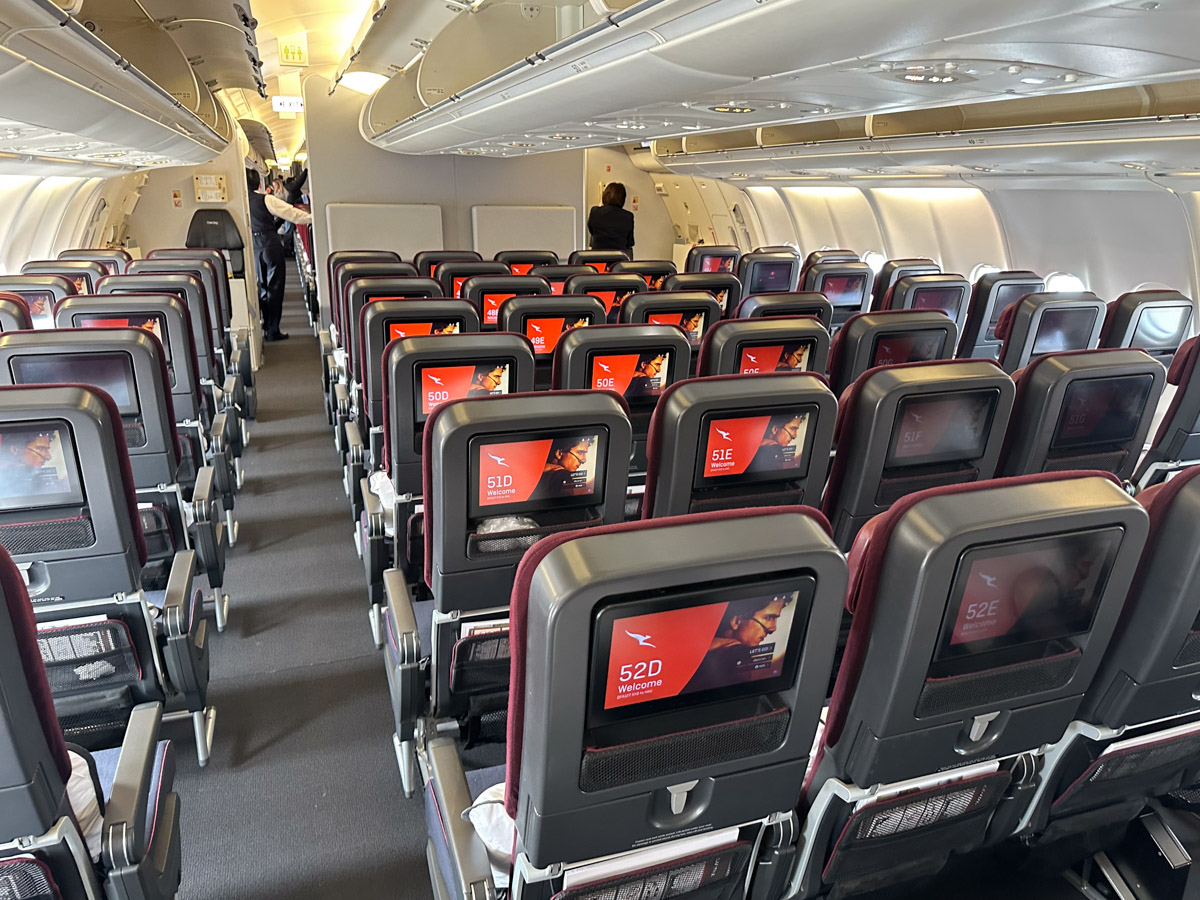
On a wide-body aircraft, the seats are more likely to have seat-back entertainment screens. Business Class typically has comfortable lie-flat beds – rather than seats that just recline a bit. Since there are twin aisles, it’s also easier to access the toilets.
For these reasons, many people prefer flying on wide-body planes. Some people will even go well out of the way to do so!
Boeing vs Airbus
America’s Boeing and Europe’s Airbus are the world’s two main manufacturers of large, commercial passenger jets. (Embraer and various other companies also make regional jets.)
Many pilots have a preference for either Boeing or Airbus because the two plane makers have fundamentally different approaches to designing aircraft. Boeing gives more control directly to the pilots, while Airbus planes use “fly by wire” technology that takes pilots’ inputs and runs them through a computer. In some cases, the Airbus computer might even override the pilot’s yoke inputs – for better, or worse.
From a passenger perspective, the differences between Boeing and Airbus planes are more subtle. But as a general rule, for whatever reason, Airbus planes tend to have slightly wider Economy Class seats than Boeing planes.
Turboprops vs jets
Another key difference between plane types is between turboprop and jet aircraft.
You can easily tell the difference because turboprop planes have propellers, rather than jet engines. They are usually used on shorter regional flights.
Planes classified as turboprops include the Saab 340, ATR72 and Dash 8.
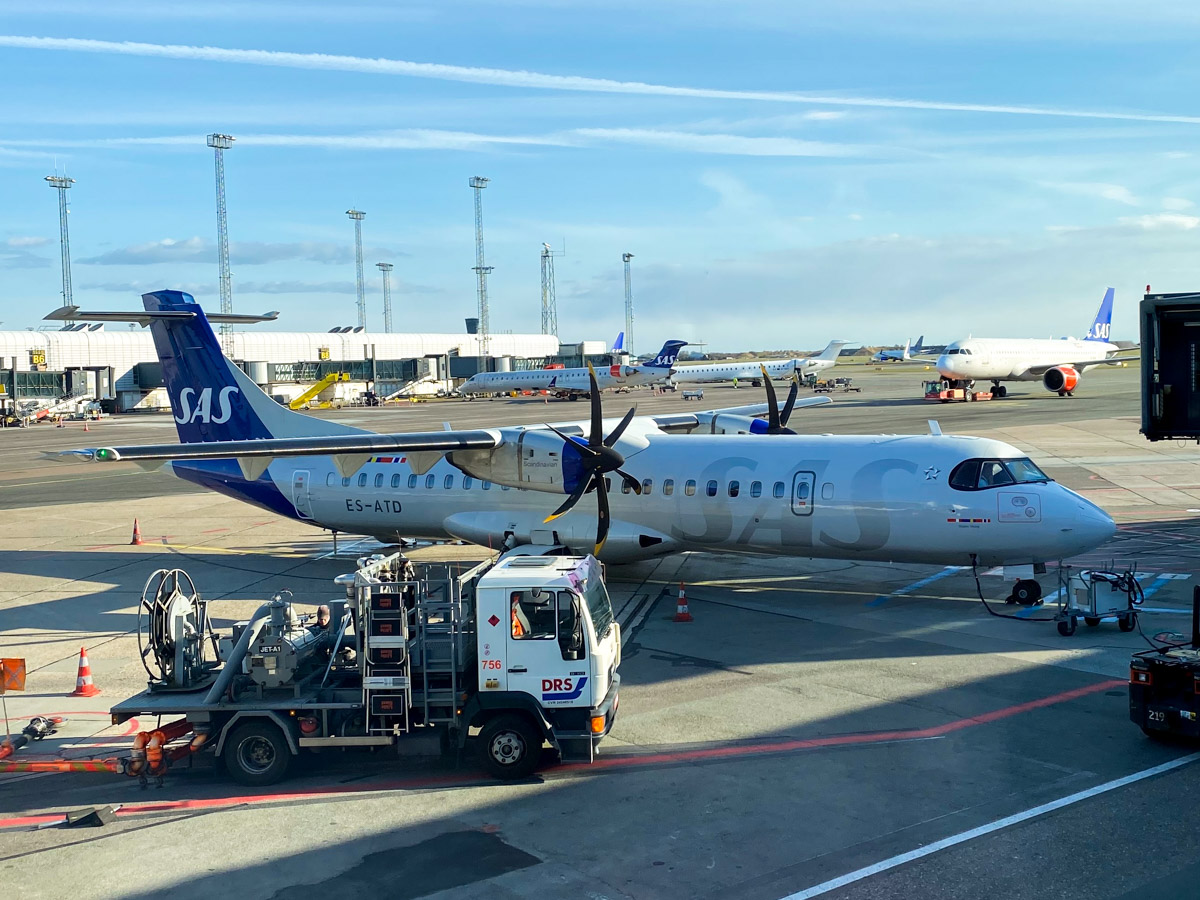
Some flyers consider turboprop planes to be less comfortable because they are smaller, noisier and any turbulence is often more noticeable when flying in them. They don’t usually have a Business Class cabin and you can feel the vibration of the engines a bit more.
That’s not to say that turboprop planes aren’t safe. In fact, planes like the Dash 8 are highly capable, reliable and efficient aircraft that serve a specific purpose. And some frequent flyers actually prefer these planes on shorter flights because there are fewer passengers – which could mean better service – and it feels more like “real” flying.
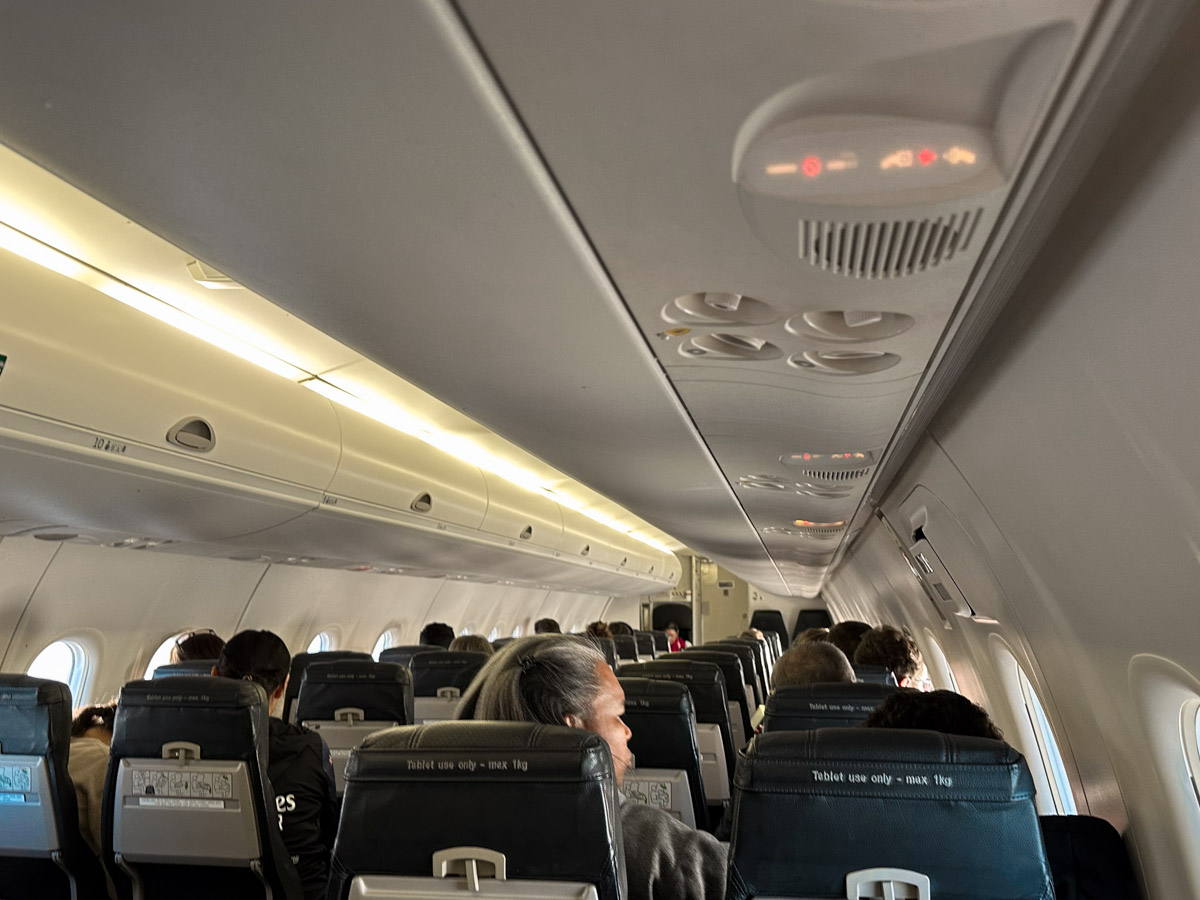
Airlines typically use turboprop planes on routes that either have too few passengers to justify jet service, or to fly to smaller airports with short runways. That’s because these planes are capable of taking off and landing on much shorter runways than jet aircraft. Their cruise speeds are a bit slower than jet aircraft, but the difference is usually marginal on the short routes that turboprop planes fly.
Characteristics, pros & cons of specific plane types
So, with all of this in mind, how can you tell specific plane types from others? What are the main pros & cons of different aircraft types?
Let’s take a closer look at the main jet aircraft types, in order from smallest to biggest…
Embraer E-Jet (E170 and E190)

The Embraer E-Jet family includes the following aircraft types:
- Embraer E170/E175 – a smaller variant commonly used by regional airlines in the USA
- Embraer E190/E195 – a larger version used around the world, including in Australia by Alliance Airlines/QantasLink
The E-Jets are a really comfortable aircraft from a passenger perspective. They have a 2-2 seating layout in Economy Class, meaning there are no middle seats anywhere on the plane!
Pros
- Typical seating layout of 1-2 in Business Class or 2-2 in Economy
- Comfortable regional jet with large windows
Cons
- Often lacks seat-back in-flight entertainment or Wi-Fi connectivity
- It’s a smaller plane which means turbulence can be a bit more noticeable
Airbus A220
The Airbus A220, originally known as the Bombardier CSeries, is an efficient, modern and very comfortable aircraft. Economy Class typically has a 2-3 seating layout, with wide seats and pleasant mood lighting.
You can find the Airbus A220 in service with airlines including QantasLink, Air Baltic, Air Canada, Delta and SWISS.
Pros
- Modern narrow-body jet aircraft
- Wide seats
- Pleasant mood lighting and large windows
- Good fuel efficiency
Cons
- Most airlines have not installed seat-back entertainment screens on A220s
Boeing 737
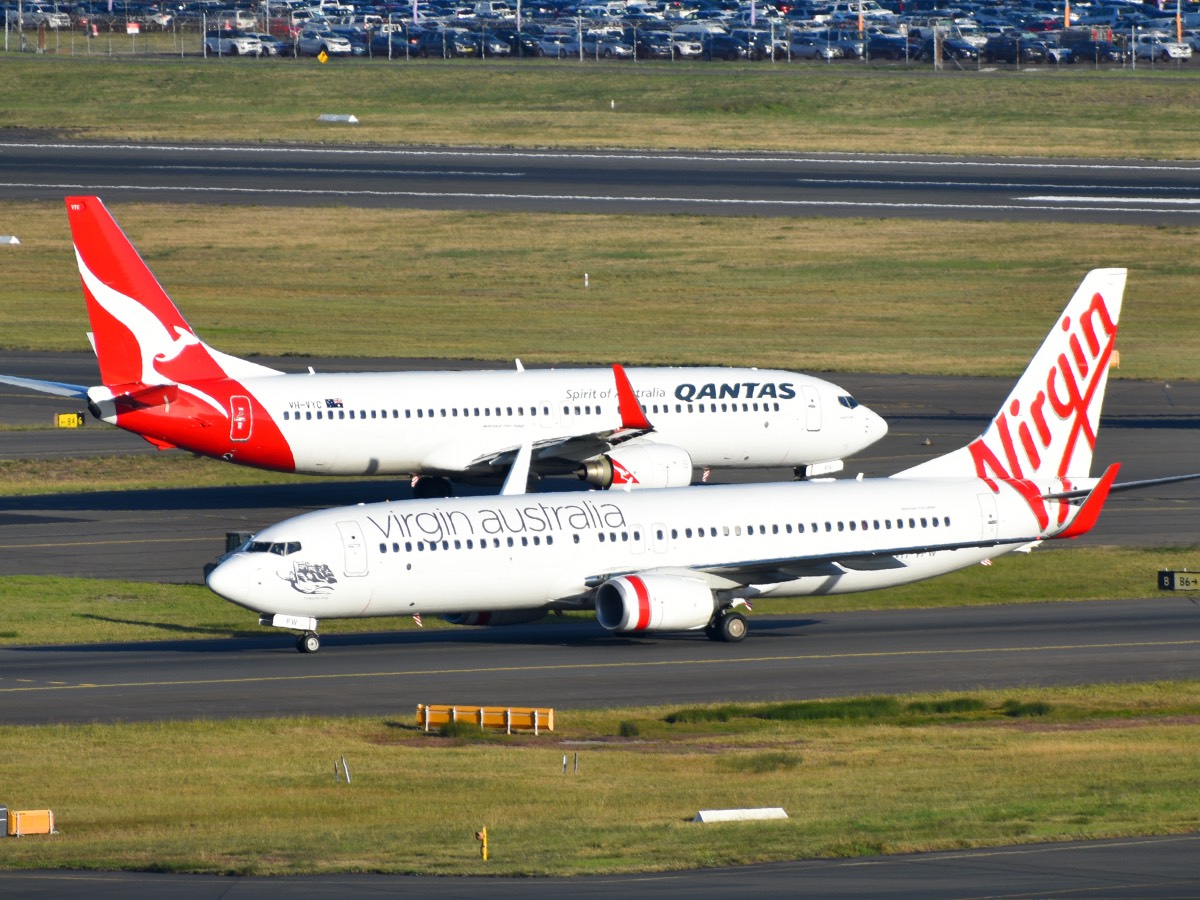
The Boeing 737 is the best selling Boeing aircraft of all time, and a common sight in Australian skies as it’s the backbone of Qantas and Virgin Australia’s short-haul fleets.
Different versions of the Boeing 737 have been around for well over 50 years. The main types you’ll see flying today in Australia are:
- The Boeing 737-700 and 737-800, which are “next-generation” Boeing 737s
- The Boeing 737-8 MAX, a newer version of the 737 with larger engines that Virgin Australia flies.
While these are very common short-haul aircraft, they often feel a bit cramped. Economy Class typically has a 3-3 layout, while Business Class usually features recliner seats in a 2-2 configuration.
Pros
- Dependable short-to-medium haul aircraft
- The newer 737 “Boeing Sky Interior” cabins are quite pleasant, with large windows and nice mood lighting
Cons
- Narrower fuselage than the Airbus A320, leading to narrower seats
- Most airlines do not have lie-flat seats in Business Class (some exceptions include Singapore Airlines, flydubai and Copa Airlines)
- There’s only one aisle, so toilet access can be a problem during meal services
Airbus A320

The Airbus A320 is another extremely popular short-haul jet used by airlines all around the world. Like the Boeing 737, it typically has a 3-3 seating configuration in Economy Class. However, the A320 actually has a wider fuselage – meaning the seats are each about an inch wider.
The Airbus A320 family includes the shorter A319 and longer A321. Airbus has also developed newer, more fuel-efficient versions of the A320 family including the A320neo, A321neo LR (currently in service with Jetstar) and the A321XLR (which will soon enter service with Qantas).
Pros
- Wider fuselage than the 737 means wider Economy Class seats
- A reliable and highly capable jet aircraft which is used all over the world
Cons
- If you fly the A320 with Jetstar, Virgin Australia Regional Airlines or QantasLink, the legroom is quite poor
- Most airlines have installed recliner Business Class seats on their A320s, rather than lie-flat beds
- There’s only one aisle, so toilet access can be a problem during meal services
Boeing 767
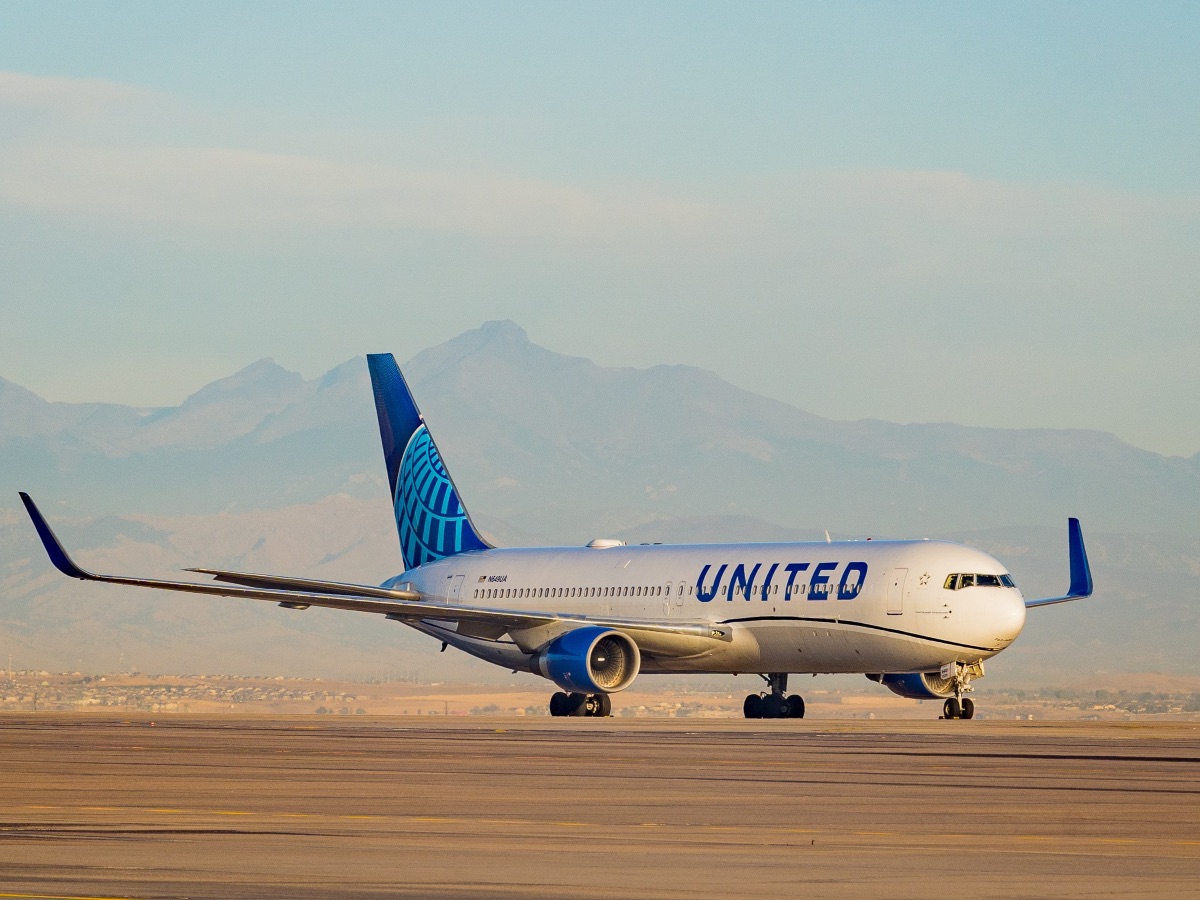
While the Boeing 767 is an older wide-body jet, it’s an extremely comfortable aircraft. In Economy Class, most airlines use a 2-3-2 seating configuration which means there’s only one middle seat per row.
Pros
- Wide-body jet with wide Economy Class seats and easy aisle access for most passengers
Cons
- Most 767s that are still in service are quite old, so the cabin interiors might be a bit worn out
Airbus A330

The Airbus A330, a wide-body jet typically used for medium and long-haul flights, is another passenger favourite. It has a comfortable 2-4-2 Economy Class seating layout, with fairly wide seats. Up the front, most airlines have installed lie-flat beds in Business Class.
However, there are some exceptions. Low-cost carriers including AirAsia X, Vietjet Air and Cebu Pacific have opted for a much tighter 3-3-3 Economy configuration which is honestly miserable.
The Airbus A330-200 and slightly longer A330-300 are the most common A330 variants you’ll find flying in Australian skies. Some overseas airlines, including Air Mauritius and TAP Air Portugal, fly the more modern A330neo.
Airbus also has a similar plane called the A340. This has a similar cabin layout to the A330, but it has four engines instead of two.
Pros
- Spacious wide-body aircraft with superior comfort compared to narrow-body jets
- Most airlines have opted for a comfortable 2-4-2 Economy Class seating layout
Cons
- Some A330s in service are getting a bit old and worn out
- Some low-cost airlines have very narrow Economy seats
Boeing 787
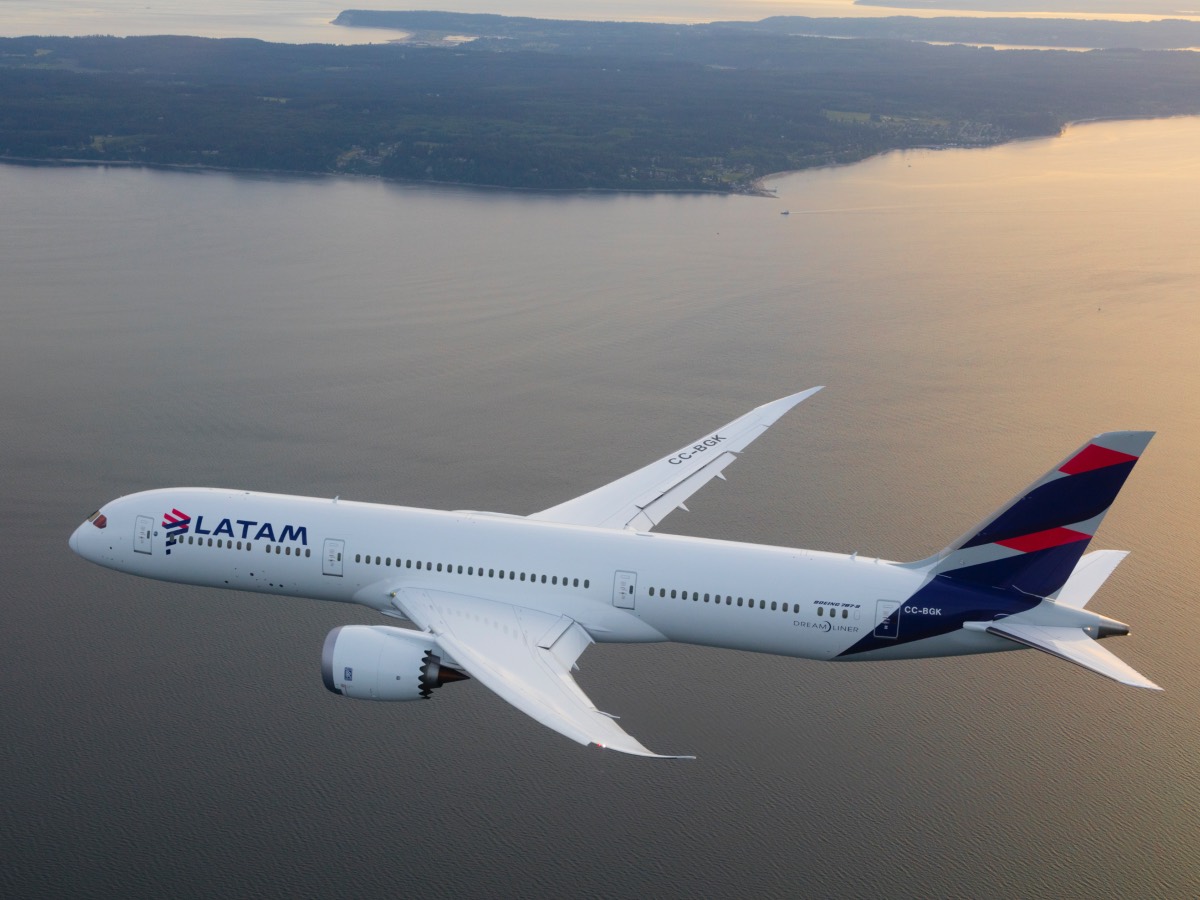
Also known as the “Dreamliner”, the 787 is Boeing’s newest wide-body jet. This plane type comes in three variants:
- The shorter 787-8, used by airlines including Jetstar
- The 787-9, used by airlines including Qantas
- The longer 787-10, used by some overseas airlines including Etihad
The Boeing 787 is designed for long-haul flights, and can even fly from Perth to London without stopping. It has some innovative cabin features including dimmable windows and better air quality, as the cabin altitude is kept lower than on other aircraft types. This means the cabin is more humid, so you’re less likely to get off a long-haul flight with dry skin and a sore throat.
Boeing originally intended for the Boeing 787 to have a spacious 2-4-2 configuration in Economy Class. Unfortunately, only one airline – Japan Airlines – has opted for that. Every other 787 operator uses a narrower 3-3-3 Economy layout, which can feel tight on an ultra long-haul flight.
Pros
- High-tech dimmable windows instead of window shades
- Lower cabin altitude
- Most airlines have seat-back entertainment screens on their 787s
- Most airlines have lie-flat Business Class seats and even a Premium Economy cabin
- Pleasant mood lighting
Cons
- Narrow Economy Class seats on all airlines except Japan Airlines
- Cabin crew can override window settings
Airbus A350
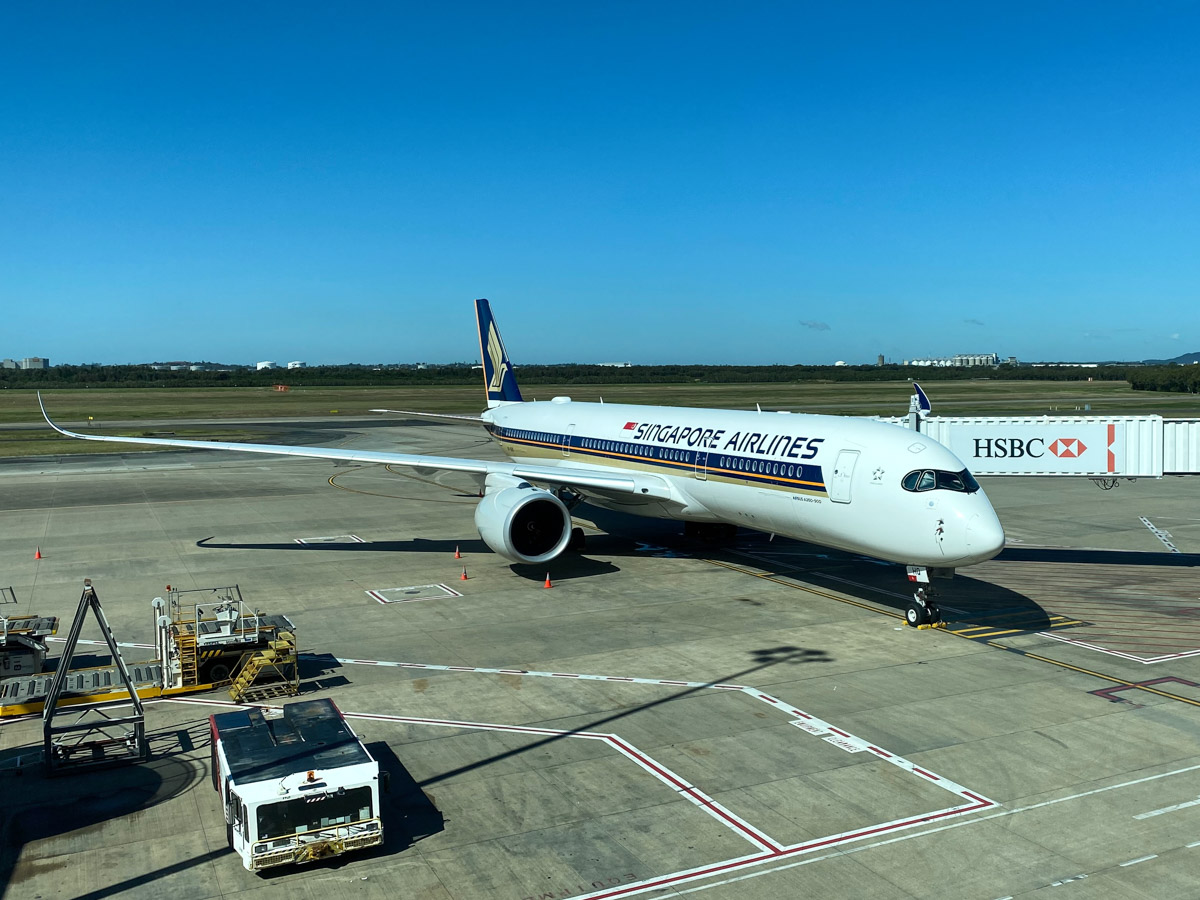
The Airbus A350 is a modern, comfortable wide-body plane type that’s a delight to fly in. It has a long range and even has a cool cockpit window that looks like sunglasses.
Most airlines use a 3-3-3 seating layout in Economy Class. While this is the same as the Boeing 787, the cabin is wider so the A350 seats are also wider than on the 787.
Pros
- Wider Economy seats than on the 787
- Business Class typically has lie-flat beds, and many airlines have Premium Economy on their A350s
- Most airlines have seat-back entertainment screens
- Large overhead lockers and pleasant mood lighting
- Quiet
- Many airlines have external cameras installed, that you can watch through the in-flight entertainment
Cons
- Some low-cost carriers (e.g. FrenchBee) have a tight 3-4-3 seating layout in Economy
Boeing 777
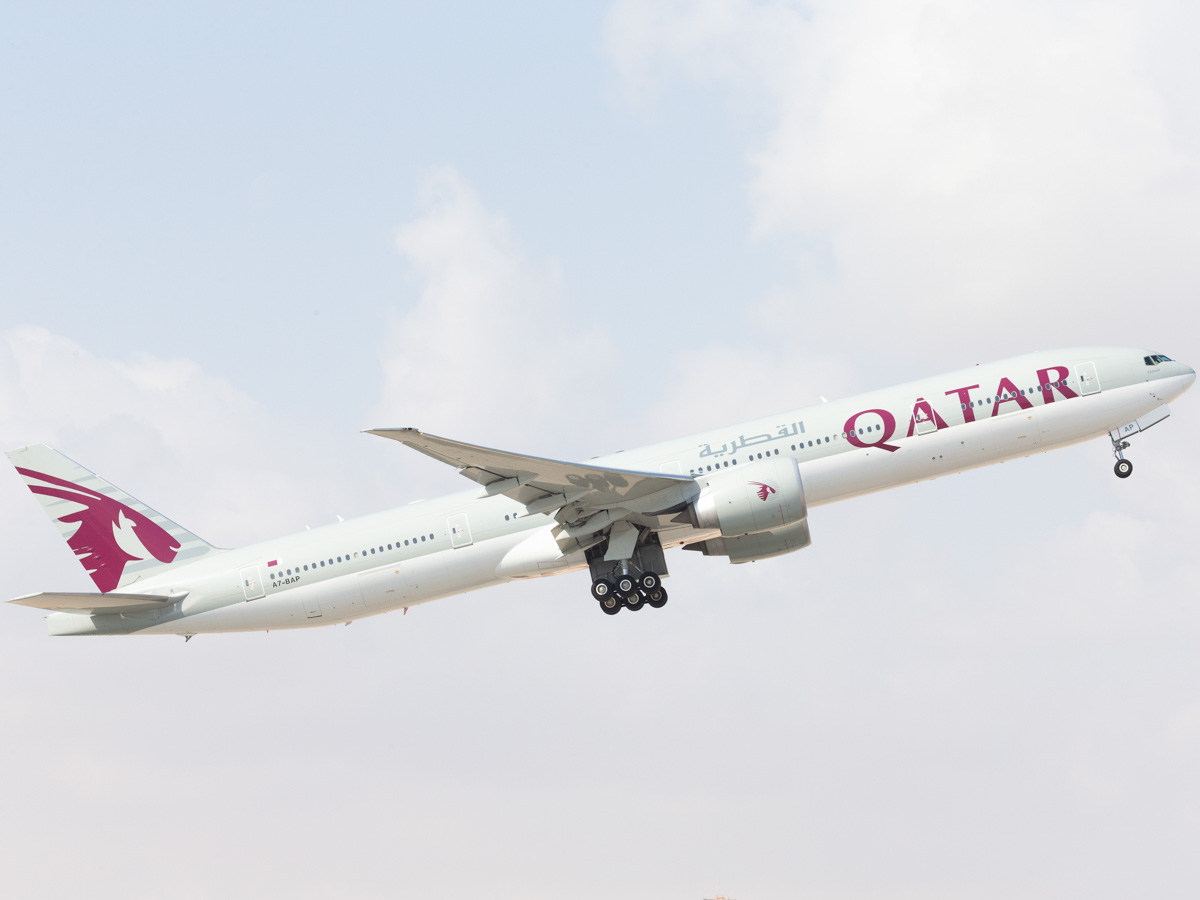
The Boeing 777 is another highly capable wide-body jet, used mainly for long-range flights. But this twin-engine aircraft is not quite as modern as the Boeing 787 or Airbus A350, and it’s a bit noisier.
In the past, most airlines configured Economy Class on their Boeing 777s in a spacious 3-3-3 layout. Unfortunately, 3-4-3 is now the norm on airlines including Emirates, Qatar Airways, American Airlines, KLM, Air Canada, Air New Zealand and British Airways. But carriers including Saudia and Singapore Airlines still retain a 3-3-3 Economy Class layout on its 777s.
Pros
- Most airlines have lie-flat Business seats on their 777s
- Many airlines also have Premium Economy and/or First Class available
- Spacious Economy seats on airlines with 9-abreast seating
- Most airlines have good in-flight entertainment on their 777s
Cons
- Narrow Economy seats on airlines with 10-abreast seating
- Noisier cabin than the 787, A350 or A380
- Beware the 2-3-2 Business Class configuration on Emirates & Turkish Airlines
Boeing 747

The iconic Boeing 747 is known as the “queen of the skies” for a reason. Easily recognisable for its upper deck “bubble” and four engines, it’s a great long-haul aircraft. This is especially the case if you’re in Business or First Class, as you might have the opportunity to sit in the “nose” or the semi-private upper deck. But even in Economy, it offers a spacious cabin in a 3-4-3 layout.
Nowadays, there are only a handful of airlines flying Boeing 747s in regular passenger service. Your best bet is to look for a flight on a Boeing 747-8 with Lufthansa, Korean Air or Air China.
Pros
- Spacious cabin
- The upper deck and nose are unique and semi-private
- Many airlines have four cabin classes on their 747s
- It just looks really cool!
Cons
- It’s an older long-haul aircraft, which is a bit noisier than newer models
Airbus A380

The Airbus A380 is the other four-engined wide-body jet in regular use around the world. The “superjumbo” is iconic for its full-length upper deck… and because, well, it looks a bit like a whale!
This modern, spacious and very comfortable jetliner is a hit with passengers. It offers fairly wide Economy Class seats, and there are handy side storage lockers beside the window seats on the upper deck.
This is the flagship aircraft of most of the airlines that still operate the Airbus A380. In fact, many airlines save their best products for their A380s. Emirates, Etihad, Qatar Airways and Korean Air even have bars on their A380s for Business and First Class passengers, while Qantas offers a small lounge area on its A380.
Pros
- A large, spacious aircraft with two full-length passenger decks
- Spacious seating layout in all cabin classes
- Most airlines have lie-flat Business seating, as well as Premium Economy and First Class
- Good in-flight entertainment
- You can watch the view from the external cameras on your personal TV screen
- A smooth ride
- Quiet
Cons
- If I have to think of a disadvantage to flying the A380, it’s that there are so many passengers on board that it can take a while to board/disembark, and the service might feel a bit less personal



Community Comments
Loading new replies...
Join the full discussion at the Australian Frequent Flyer →